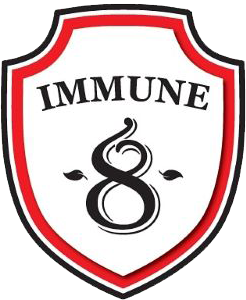September 12, 2022
Immune8
Blog
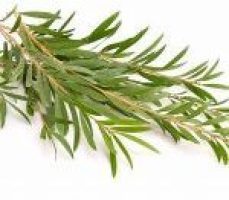
TEA TREE Essential Oil
Melaleuca Alternifolia
Family: Myrtaceae contains 230 species, mostly native to Australia
Other Tea Tree species: M. dissitiflora, M. linarifolia, M. uncinate
Given the variety of species, the International Standard has set a requirement on the chemical and physical criteria of the oil composition to be called Tea Tree and not the species of location or origin. Commercial Tea Tree oil (TTO) will have 30-40% terpinene-4-ol or more but not lower which ensures the antimicrobial activity. Two more chemotype compositions are terpinolene and four 1,8-cineole.
Safety data on Tea Tree Oil states non-toxic, non-irritant, and non-sensitizing from the Aromatherapy Encyclopedia by Judith Law.
Tea Tree is mostly grown in Australia and is known as paperbark tree. The native habitat for cultivating tea tree is low-lying subtropical swamy coastal ground. The trees can grow up 5-8 meters. A tree older than 3 years will have fluffy white flowers. Most plants are harvested within 1-3 years. Leaves and terminal branches produce the oil from stream distillation. Kanuka and manuka derived from the New Zealand plants of Kunzea ericoides and Leptospermum scoparium are known as TTO (Carson et al., 2006, Clinical Microbiology Reviews, vol 19(1), 50-62). Doi: 10.1128/CMR.19.1.50-62.2006
History: Bundjalung Aborigines used crushed tea tree leaves to inhale for coughs and colds or sprinkled on wounds. Penfold wrote in 1920-the 30s about assessing the compounds of TTO for their antimicrobial effects. Oil was extremely popular in World War II. Other research on TTO as an anti-bacterial started in the 1940s and antimicrobial activity from the early 1990s. Plantations were later established in the 1970-80s and today are in Western Australia, New South Wales, and Queensland (Carson et al., 2006, Clinical Microbiology Reviews, vol 19(1), 50-62). Doi: 10.1128/CMR.19.1.50-62.2006
Each oil consists of many active constituents (chemical makeup) that are unique to just that plant, tree, or shrub. Various parts of that plant (stem, leaves, bark, resin, flowers) are used in making oil and can contain different active constituents designed by nature for protection and growth. The location in the world where the plant is grown affects its therapeutic nature as well. The mixture of the chemistry of the plant gives it the aroma.
The major active chemical constituents of Tea Tree oil are Terpinen-4-ol at 41.9%, gamma-terpinene 26.3%, and alpha-terpinene at 11.9%.
The following are research studies done on Tea Tree essential oil.
Aquaculture plays a key role in worldwide food production. The intensive and stressful raising of farmed fish creates a bacterial infection called an epizootic ulcerative syndrome. The protective effects of TTO were studied to stop infections caused by Aeromonas hydrophilia (gram-negative pathogen) in silver catfish. TTO was found to be able to stop the alterations of the purinergic enzymes that regulate ATP, ADP, and Ado. TTO was also able to make the innate immune response better through anti-inflammatory cytokine levels during the infections. TTO is known for its anti-inflammatory effect. The bacteria increased the pro-inflammation cytokines and TTO was able to interfere with that process (Baldissera et al., 2017, Microbial Pathogens, vol 109, 61-66).
DOI: 10.1016/j.micpath.2017.05.026
Silver catfish infected with Aeromonas hydrophilia using treatment of TTO (50 mL with ethanol) was studied for oxidative stress and for the first-time effects on hepatic enzymes of the cholinergic and adenosinergic system. TTO prevented alterations in the adenosinergic system and damage done by lipids and proteins. No change was seen in the AChE activity (Baldissera, et al., 2017, Fish & Shellfish Immunology, vol 61, 1-8).
DOI: 10.1016/j.fsi.2016.12.016
Antitumor activity with EOs was investigated with melanoma, and lung cancer cells without toxic effects on fibroblasts. TTO compound Terpinen-4-ol at 37.5% was able to synergize with the target therapy for melanoma. Out of 61 oils, TTO, Lavender, Cypress, Grapefruit, Scots pine, and Siberian Pine were most effective in reducing tumor cell proliferation without affecting normal cells in melanoma and lung carcinoma but not effective with breast and colon cells (Martile et al., 2021, Cell Death Discover, vol 7, 127). DOI: 10.1038/s41420-021-00510-3
Invasive fungal would infections (IFIs) have caused complications and death in trauma patients despite excellent trauma care. Thirteen clinical isolates from IFIs were studied to evaluate TTO. The safety of wound application of TTO levels was assessed in vitro. The kill-time assays showed fluctuation between isolates but showed significant cytotoxicity, demonstrating TTO has antifungal activity against IFIs (Homeyer et al., 2015, Medical Mycology, vol 53, 285-294). DOI: 10.1093/mmy/myu072
The most common ectoparasite are Demodex mites that infect humans and are found on skin extending to the eye. The most active ingredient in TTO for killing these mites was Terpinen-4-ol in a low concentration of 1%. This compound worked better by itself than in combination with other compounds found in TTO. Terpinene-4-ol can be formulated with acaricides (pesticides) to treat ocular and cutaneous diseases caused by demodicosis (Tighe et al., 2013, Translational Vision and Science Technology, Vol 2(7), article 2). DOI: 10.1167/tvst.2.7.2
Part of the immune system’s inflammatory components is tumor necrosis factor-alpha (TNF-alpha), Interleukin (IL)-beta, IL-8, IL-10, and prostaglandin E2 (PGE2). They are classified as cytokines and are activated by lipopolysaccharides (LPS). The TTO compound Terpinen-4-ol was able to reduce the production of inflammatory cytokines in 40 hours (Hart et al., 2000, Journal of Inflammatory Research, vol 49(11), 619-626). DOI: 10.1007/s000110050639 PMID 11131302
Trypanosoma evansi is a parasite in the blood of cattle creating a disease called Surra and is transmitted by biting flies. Surra is characterized by anemia, weight loss, recurrent fever, and death in a wide variety of domestic animals, including horses, cattle, buffalo, and camels, in Asia, Africa, and South America. A study was conducted on this parasite in rats and TTO. The rats were orally given 1 mL of TT for three days. Blood samples shown TTO was able to modulate the immunoglobulins and cytokines profiles and the course of the parasite. TTO was not toxic to the liver or kidneys (Baldissera et al., 2014, Research in Veterinary Science, vol 96, 501-506). DOI: 10.1016/j.rvsc.2014.03.013
Immune modulatory effects of TTO concentrate were studied on the human THP1 (monocyte from leukemia cell line) and murine RAW264.7 (myeloid leukemia cell lines) as models for macrophage-like cells. TTO concentrate levels were measured not to affect either the survival or proliferation of these cell lines in vitro. Lipopolysaccharide (LPS)-induced production of cytokines (IL-6, TNFα, IL-10, GM-CSF, IFNγ, and IL-3) levels were examined from the myeloid cell lines. Many of the LPS-inducible cytokines could be significantly inhibited by the TTO concentrate. TTO concentrate inhibited the LPS-induced activation of IκB phosphorylation, nuclear factor (NF)-κB signaling, inducible nitric oxide synthase, protein expression, and nitric oxide production. These results demonstrated that TTO concentrate exerts its immunomodulatory effects by inhibiting NF-κB signaling activation and levels of cytokine production by macrophage-like cell lines (Low et al., 2015, International Immunopharmacology, vol 26, 257-264).
DOI: 10.1016/j.intimp.2015.03.034
Stress can lead to poor sleep and compromised immune function. A blend of lemon, tea tree, eucalyptus, and peppermint was used as an aromatherapy treatment for testing stress, sleep, and immune function. The experimental group (30) wore a pendant daily and slept near an aromatherapy stone at night for four weeks. The experimental group had significantly lower perceived stress and depression than the control group. They also showed significantly higher sleep quality. The two groups did not differ in autonomic nervous system activity, blood sugar levels, or immune status (Lee et al., 2017, European Journal of Integrative Medicine, vol 12, 79-86).
- Plaque and Chronic Gingivitis
A study was conducted with 49 non-smokers with chronic gingivitis and TTO. They were given TTO gel, chlorhexidine gel, or a placebo gel for brushing twice a day. They were assessed at four and eight weeks. The TTO group had a significant reduction in the Papillary Bleeding Index and the Gingivitis Index scores. TTO did not show a reduction in the plaque scores (Soukoulis & Hirsch, 2004, Australian Dental Journal, AromaticScience.com
Tea Tree is part of my Immune 8 formula. You may check out other blogs on the other essential oils in the Blend
To Your Health & Happiness,
Dr. Margie
August 23, 2022
Immune8
Blog
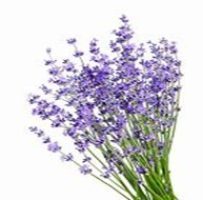
LAVENDER Essential Oil
Lavendula Augustifolia is known as True Lavender
Family: Labiatae/Lamiaceae -mint family, native to the Mediterranean, and evergreen perennial plant. Grows up to 40-60cm, flowers grow in spikes 3-4 per stem. Flowers are pale violet color but can also be white or pink.
Lavender is grown in Bulgaria, Kashmir India, France, Poland, Spain, Italy, Australia, China, Canada, Hungary, and many other places. Flowers, buds, and leaves are used for the oil. Stream distillation is used without harming active ingredients.
A leading supplier of essential oils Aromaaz International stated Lavender’s benefits:
- Promotes relaxation and relieves anxiety.
- Prevents fungal infection and heals eczema, burns, and scars.
- Useful in the treatment of depression, migraine, panic, headache, and insomnia and it calms our nerves.
- Helps fight conditions like asthma, bronchitis, throat infections, laryngitis, whooping cough, halitosis, nausea, vomiting, colds, and flatulence.
- Relieve pain in people suffering from arthritis, rheumatism, and any type of pain.
- Especially useful in revitalizing and toning up the skin. It helps in any type of skin problem including acne, insect bites, sunburn, boils, burns, oily skin, and others.
Each essential oil consists of over 200-300 active constituents (chemical makeup or properties) that are unique to just that plant, tree, or shrub. Various parts of that plant (stem, leaves, bark, resin, flowers) are used in making oil and can contain different active constituents designed by nature for protection and growth. The overall chemical makeup depends on genotype, location with soil and climate conditions, breeding, and structural features. The mixture of the chemistry of the plant gives us the aroma. Plants also contain minerals such as calcium, potassium, magnesium, zinc, copper, manganese, and iron.
The active chemical constituents of Lavender oil are linalool 37 – 40% and linalyl acetate 35-37%. Other active properties are a-terpineol, coumarin, and borneol.
Compounds could be higher depending on where the Lavender is grown. These active compounds are what give the following medicinal effects.
Anti-bacterial Effects
Poland Lavender showed high activity against gram-positive bacteria of B. subtilis and S. aureus and gram-negative bacteria of E. coli and P. aeruginosa and inhibits their growth when concentrates of .06 or 1.0 mL-1. Antimicrobial activity was seen with Poland lavender against yeast and molds (candida, A. niger, and P. expansum). Cited from Prusinowska & Smigielski, 2014, Herba Polonica, vol 60(2). DOI: 10.2478/hepo-2014-0010
Anti-fungal Effects
A variety of Australian-grown lavender was examined against four fungi. Lavandulla Augustifolia is effective against fungi Trichophyton rubrum and Aspergillus fumigatus. Lavender oils can inhibit the growth of Aspergillus niger, Aspergillus ochraceus, and Fusarium culmorum from 29-93%. Other lavender species (L. x intermedia, L. stochas, & L. x allardii) from Australia have the properties to inhibit fungi as well. Cited from Moon et al., 2007, Journal of Essential Oil Research, vol 19, 171-175).
Anti-inflammatory Effects
Transcriptional analysis showed how Lavender was able to influence the macrophages of the immune system against Staphylococcus aureus infection. This bacterium is highly resistant to antibiotics. Treatment with Lavender increased the phagocytic rate and stimulated the suppression of the bacteria from replicating. Lavender also balanced the inflammation signaling prompted by the bacteria by repressing the pro-inflammatory cytokines and their receptors of the immune system while inducing the oxygenase-1 gene expression. This research inspires the potential development of lavender as an anti-inflammatory and immune regulatory coadjutant drug. Cited from Giovannini et al., 2016, Immunological Investigations, vol 45(1), 11-28. Doi: 10.3109/08820139.2015.1085392
Inflammation is a complex biological process and lavender was studied for its effects on the acute inflammatory response. This study showed compounds of 1.8 cincole, 39.83%, borneol 22.63%, and camphor 22.12%. Lavender plants were from Brazil, the leaves and stems were used, and the oil was extracted by steam distillation. Male Swiss mice were used in the experiment and supplied by Central Animal House at the University of Maranga, Brazil. The amount of oil applied up to 10 mL did not produce cytotoxicity (destroys cells). The amount of oil up to 1 mL used on the ear edema model reduced formation, myeloperoxidase activity, and nitric oxide. In the paw edema model, the oil amount was up to 250 mg and had the same effect as in the ear edema model. This experiment was able to produce evidence that Lavender presented anti-inflammatory action. Cited from Cardia et al., 2018, Evidence-based Complementary and Alternative Medicine, ID1413940. Doi: 10.1155/2018/1413940
Antimicrobial Action boosts the Immune system
The study showed the antimicrobial action of lemon, tea tree, and lavender in washing liquid at 5% proves to inhibit Staphylococcus aureus (bacteria-MRSA), Candida sp. (yeast-fungi), and A. niger (fungi- black mold) with synthetic preservative added to ensure stability. Cited from Kunicka-Styczynska et al., 2011, International Journal of Cosmetic Science vol 33, 53-61. DOI: 10.1111/j.1468-2494.2010.00582.x
Lavender oil was tested with 45 other essential oils to investigate the interaction of therapeutic properties. The most favorable interaction was seen with lavender and Cinnamon (CZ) or with citrus Sinensis (sweet orange) against C. Albicans and Staphylococcus aureus. In a one-to-one ratio, 75.6% of the oils showed synergistic or additive results when blended with lavender. Cited from de Rapper et al., 2013, Evidence-based Complementary and Alternative Medicine, ID 852049. DOI: 10.1155/2013/852049
Two hybrids of the lavender family (L. simian and L. Grosso) were tested on their antimicrobial actions on 16 multidrug-resistant strains of Pseudomonas aeruginosa. Pseudomonas aeruginosa is a Gram-negative, aerobic rod bacterium of the Pseudomonadaceae family. Commonly found in soil and water as well as in plants and humans. It can invade any tissue struggling with immunodeficiency. P. aeruginosa causes infection in the urinary tract, respiratory system, dermis, soft tissue, bone and joint, gastrointestinal, and blood, particularly in patients with severe burns, tuberculosis, cancer, and AIDS. Importantly, P. aeruginosa causes a significant problem in patients hospitalized with cancer, cystic fibrosis, and burns, with 50% fatality according to the Centers for Disease Control and Prevention (CDC). Both lavender oils had no cytotoxic effect at low concentrations. The oils were able to reduce nitric oxide synthase activity on murine macrophages. Cited from Donadu et al., 2018, The Journal of Infection in Developing Countries, vol 12(1), 009-014. Doi: 10.3855/jidc.9920
Anti-viral Effects
In view of the Covid-19 pandemic, experiments were conducted on lavender and common sage to combat avian influenza H5N1. Lavender’s major constituents were linalyl and linalool. Sage’s components were white camphor and α-thujone. Both oils were effective at being a natural anti-inflammatory, antioxidant, and antiviral agent Cited from Baker et al., 2021, Journal of Agricultural and Food Research, vol 4,100135.
Aromatherapy Environment
Workplace stress cost the US more than $150 billion in stress-related problems. Stress is a significant factor that adds to job dissatisfaction, burnout, and nursing staff turnover. Therapeutic grade Lavender was found to help in the workplace to reduce stress in the nursing environment. Cited from Johnson et al., 2017, Intensive and Critical Care Nursing, vol 40, 18-25. DOI: 10.1016/j.iccn.2017.01.006
Aromatherapy Massage on pregnant women’s stress and immune system functions. Twenty-four pregnant women received a 70-minute massage with lavender aromatherapy every other week for twenty weeks and the control group received normal care. The results showed lower salivary cortisol and higher salivary IgA present in the massage group on pre-post testing compared to control group. Aromatherapy can decrease stress and increase immune function. Cited from Chen et al., 2017, The Journal of Alternative and Complementary Medicine, vol 23(10), 778-786. Doi: 10.1089/acm.2016.0426
Lavender is known to reduce stress and anxiety as seen in a study with 122 critical condition patients. Reduction of anxiety with Lavender was also seen in patients waiting in a dental office. Massage with Lavender reduced the need for pain relievers in young HIV patients. These studies were mentioned in Prusinowska & Smigielski, 2014, Herba Polonica, vol 60(2). DOI: 10.2478/hepo-2014-0010
Bug Repellant
Lavender has been used to repel moths and flies. Lavender compounds can get rid of mites from rabbits. Article title: Acaricidal agents of natural origin against Psoroptes cuniculi (parasite-mite). Cited from Perrucci et al.,1994, Parassitologia, Vol 36(3), 269-271. PMID: 7637996
Cancer Treatments
A cytotoxic study done on lung cancer showed lavender inhibited carcinogenic cell growth (Shou-Dong et el., 2009, Food Science Technology, 2, 213-215).
Lavender seed extract was shown to be probable cancer prevention and therapy from experiments with liver cancer cells by inhibiting cytotoxicity Cited from Alshammari, G. M., 2022, PLoS ONE, vol 17(4), DOI: 10.1371/journal.pone.0267499
Saffron, lavender, clove, and red beet are being investigated to help with cancer treatments to diminish the harmful toxic side effects. The nanocomposite designs of phytomolecules from medicinal and aromatic plants: promising anticancer-antiviral applications. (Kaplan A., Beni-suef University Journal of Basic and Applied Sciences. 2022 ;11(1):17. DOI: 10.1186/s43088-022-00198-z. PMID: 35127958; PMCID: PMC8799966.
Prostate cancer in men is the second leading cause of death from cancer. Lavender was tested in vitro on the human prostate cancer PC-3 and DU145. The PC-3 cells were used to develop subcutaneous xenograft tumors with nude mice. Lavender essential oil, linalool, and linalyl acetate showed stronger inhabitation on PC-3 than on the DU145 cells. Cell death from the treatments of the oil and compounds was noticed. The xenografts model with the PC-3 cells showed suppressed tumor growth with the oil treatments. This study showed an anti-tumor effect through cell proliferation inhibition and apoptosis in the tumor grafts. Cited from Zhao et al., 2017, Integrative Cancer Therapies, vol 16(2), 215-226. DOI: 10.1177/1534735416645408
Algerian Lavandula stoechas was used to test different cancer cell lines with the compound 1,8-Cineole (61.36%) which is an oxygenated monoterpene. The ear edema model reflected an anti-inflammatory response from the oil. The Lavandula oil was able to reduce paw edema. Histological analysis showed inhibition of the skin inflammatory response. This compound was found to be active against human gastric adenocarcinoma (AGS), melanoma (MV3), and breast carcinoma MDA-MB-231 cells with median inhibitory concentrations. Cited from Boukhatem et al., 2020, Molecules, Vol 25, 3671. DOI: 10.3390/molecules.25163671
Cognitive Deficits
The effects of lavender’s compound linalool were studied against cognitive decline induced by D-Galactose and Aluminum Trichloride in mice. Alzheimer’s disease (AD) is a neurodegenerative disease of the brain. D-gal is reducing sugar in animals and can turn into hydrogen peroxide when in excess. This is seen in natural aging. AlCl3, a neurotoxin, accelerates AD. Oxidative stress is seen as a factor. Lavender has been found to give neuro and cognitive protection because of its linalool compound of 37.96% and linalyl acetate of 29.34%. Oxidative damage was decreased in the hippocampus and lavender oil protected the cortex. Linalool reversed the D-gal and AlCl3 in the hippocampus. Lavender oil protected the body’s Nrf2/HO-1 oxidative protection pathways. CaMKII, a key protein in the post-synaptic space for neuron communication, showed an increase with Linalool (100 mg/mL). Two other proteins needed for brain function are BDNF and TrkB which were found significantly higher due to the action of lavender oil on D-Gal and AlCI3. Cited from Xu et al., 2017, Evidence-based Complementary and Alternative Medicine, ID 7426538.
Wound Healing
Skin wounds on rats were treated with lavender oil and were significantly decreased as compared to that of wounds of control rats at 4, 6, 8, and 10 days after wounding. Lavender oil induced expression of type I and III collagen at 4 days after wounding, accompanied by an increased number of fibroblasts, which synthesize collagen. TGF-β (transforming growth factor-Beta) in wounds treated with lavender oil was significantly increased as compared to control. Myofibroblasts (cells that help heal and repair damaged tissue) increase was observed in wounds treated with lavender oil at 4 days. The beneficial effect of lavender oil on wound healing may raise the possibility of innovative approaches as complementary treatment besides conventional therapy. (Mori et al., 2016, BMC Complementary and Alternative Medicine 16(144). DOI: 10.11.86/s12906-016-1128-7
Check out this link for more information about the Immune 8 essential oil blend.
Immune 8 Blend
To Your Health and Happiness,
Dr. Margie
September 6, 2019
Immune8
Blog
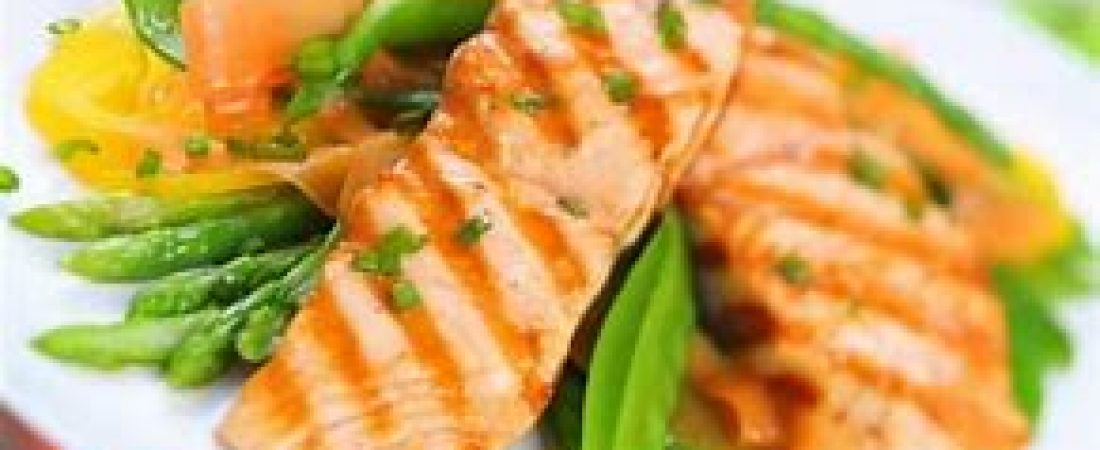
Omega 3 in Wild Salmon: The Neuro-nutrient Connection
The purpose of this article is to introduce evidence that will connect the importance of omega 3 fatty acid to mood and cognitive disorders. Nearly 58 million people have a mental illness, 1 out of every 4 adults, (2005). Research is showing evidence that a deficiency of essential fatty acids (EFAs) is detrimental to proper mental functioning, especially Omega 6, eicosapentaenoic acid (EPA), and Omega 3, docosahexaenoic acid (DHA). Read More
September 6, 2019
Immune8
Blog
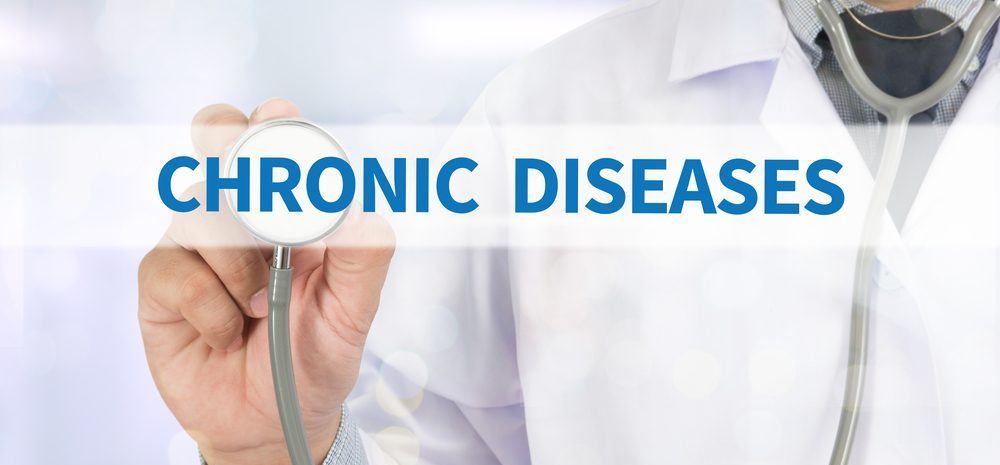
Multiple Sclerosis
Multiple Sclerosis (MS) is believed to be discovered by Charcot in 1868, who made the first real clear description of MS. MS is defined as an autoimmune disease characterized by inflammation that attacks the Central Nervous System (CNS), thus destroying the myelinated sheets leading to lesions or plaques that block signals to vital organs, muscles, and the brain. Multiple, meaning many, and sclerosis, meaning scar (sclerae hardening, plaques, or lesions). MS is classified as a neurological disorder. This chronic disease usually appears between the ages of 20-40 in adults. Also, this disease affects more women than men. MS develops differently in everyone and is hard to diagnose.
Read More
August 29, 2019
Immune8
Blog

Vacation- Will it get you Sick?
Eighteen years as a flight attendant, may I give you helpful tips for a flawless vacation? There is always that craziness of stress of actually getting out the door. All that fun in the sun is awaiting you and a much-deserved break from work or school. Maybe venture out on a ski trip instead of the beach. No matter where or when let’s talk about a few precautions so your beautiful vacation does not get you sick. Read More
August 28, 2019
Immune8
Blog
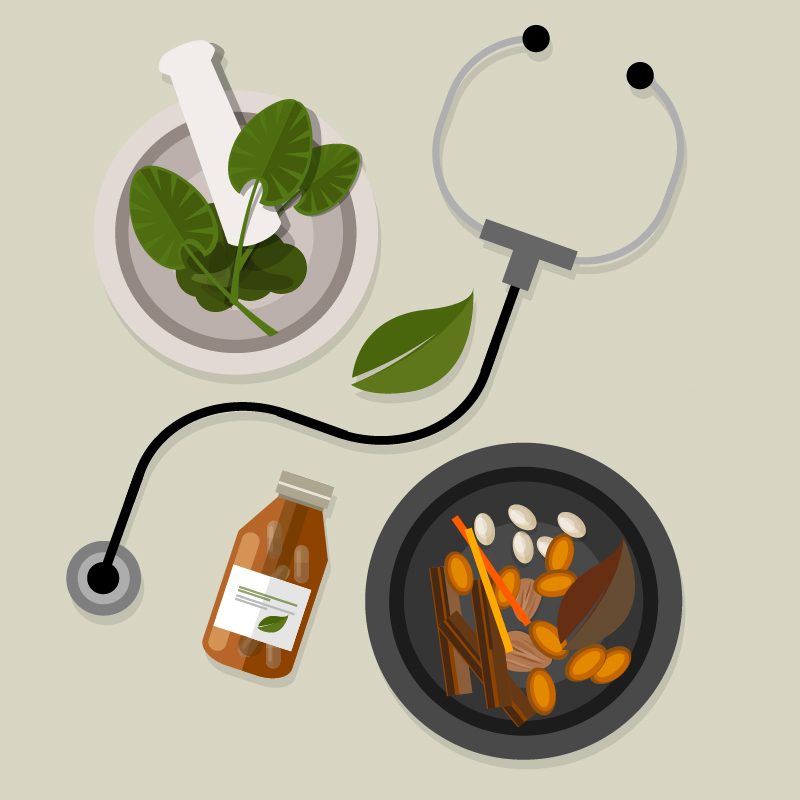
Hom-Nat-Hol. Not a chant!
What is homeopathic medicine?
National Institute of Health/National Center for Complementary and Integrative Health stated that homeopathy, also known as homeopathic medicine, was developed in Germany over 200 years ago and is based on two unconventional theories:
- “Like cures like”—the notion that a disease can be cured by a substance that produces similar symptoms in healthy people
- “Law of minimum dose”—the notion that the lowerthe dose of the medication, the greater its effectiveness. Many homeopathic products are so diluted that no molecules of the original substance remain.
Homeopathic products are developed from plants (such as red onion, arnica [mountain herb], poison ivy, belladonna [deadly nightshade], and stinging nettle), minerals (such as white arsenic), or animals (such as crushed whole bees). Most are made as sugar pellets to be placed under the tongue (sublingual). They may also be in other forms, such as ointments, gels, drops, creams, and tablets. These treatments are personalized or developed for each person’s condition.
Holistic medicine, homeopaths or naturopathic doctors (NDs) acknowledge the body’s natural healing abilities, respect the patient’s role within the healing process and take extensive emotional, physical and psychological histories. NDs treat a variety of issues using homeopathic medicines and are also concerned with preventative medicine and wellness. Naturopaths may treat allergies, high blood pressure, depression, fatigue, fibromyalgia, insomnia, menstrual issues and weight control. The medicines they prescribe, which are manufactured by homeopathic pharmaceutical companies, are referred to as remedies and contain a mild form of bacteria that triggers an immune response.
In addition to working as primary care physicians, NDs may also work as consultants, natural pharmacists, research scientists and wellness educators. Some may choose to work within a multi-disciplinary practice that includes other health care providers, such as acupuncturists and licensed massage therapists.
Homeopathic practitioners can have different educational, licensure and certification options. However, they should all have some key skills, including problem-solving skills, the ability to be empathetic and personable, strong listening skills, strong critical-thinking skills and the ability to document and keep accurate records.
Fair warning in departments that regulate safety: According to the 2012 National Health Interview Survey (NHIS), an estimated 5 million American adults and 1 million children used homeopathy in 2011. Most adults use homeopathic products for colds and musculoskeletal pain. The Australian government’s National Health and Medical Research Council in 2015, concluded that there is no reliable evidence that homeopathy is effective for any health condition. In 2016, the U.S. Federal Trade Commission (FTC) announced it will hold efficacy and safety claims for over-the-counter homeopathic drugs to the same standard as those for other products making similar claims. In December 2017, the U.S. Food and Drug Administration (FDA) proposed a new risk-based enforcement approach to homeopathic products. The scientific community is still trying to reach a conclusion on how a product with little or no active properties can be effective. Although we see healing in the health field with these remedies, it may be a placebo effect. Homeopathic treatments are not a “one pill treats all”. There are hundreds of possible remedies for thousands of symptoms.
Sources: The American Association of Naturopathic Physicians; The Council for Homeopathic Certification; Association of Accredited Naturopathic Medical Colleges; U.S. Bureau of Labor Statistics; PayScale.com
What is Naturopathic?
American Association of Naturopathic Physician states that is the “naturopathic physician’s role to identify and remove barriers to good health by helping to create a healing internal and external environment. Naturopathic physicians work in private practices, hospitals, clinics and community health centers”. Naturopathy or naturopathic medicine is a form of alternative medicine that employs an array of pseudoscientific practices branded as “natural”, “non-invasive”, and as promoting “self-healing”.
What is a holistic practitioner?
A holistic practitioner is concerned with the whole person, mind-body-soul. These three elements need to be addressed in order to be healed. Injury and illness are received as a message that the mind-body-spirit is not in harmony. The holistic practitioner incorporates homeopathic medicine to address the whole person. The initial conversation is very detailed to be able to understand the whole person including, emotions, dreams, stressors, personal interactions, work life, and home life.
Along with a natural way of healing, is traditional Chinese medicine with the uses of herbs. People seek out a way to heal by not using conventional medicines and its side effects. Herbs most researched from the National Center of Complementary and Alternative Medicines website in 2012 were St John’s wort, fenugreek, echinacea, aloe vera, and evening primrose. I am constantly looking for the next combination of herbs to help with aging, hormones imbalance, and type 2 diabetes. I have found some worked and some didn’t. Do investigation on your illness or injury.
Other therapies that can be alternative or complementary are chiropractic, massage, and acupuncture. Chiropractic treatments are known as spinal manipulative therapy. Most people go to a chiropractor for muscle/skeletal pain in the back or neck. This has helped me after a car wreck, to regain health and balance. Little slips and falls add up creating imbalance of the skeletal system. Massage is a great additive to chiropractic. Massage is great at relaxation, increase blood flow, and relieving general muscle pain. Massage has been used for multiple sclerosis, cancer, HIV/AIDS, neurological trauma, sciatica, depression, anxiety disorders, and other mind/body complaints. I have been a massage therapist for years and have helped with all kinds of body/mind problems. Acupuncture has been around for thousands of years in the East. Mostly used for pain, has also been used in all types of illnesses. The use of hair-fine needles is inserted into the body along the meridian lines and act as a signal or conduit to send a message to that organ to heal. I have tried acupuncture to heal and found that it did help.
If you are looking for a holistic way to heal, you may be very surprised from the results. Yes, you can chant Hom-Nat-Hol (LOL) and add Om. Om is the highest vibration, repeat 108 times to remove blocks and bring in peace.
You may also want to try essential oils, massage, tai chi, and meditation. Anything that calms the mind and nervous system will improve health.
Dr. Axe recommends cinnamon, thyme, oregano, and tea tree as the best antibacterial oils. Dr. Axe also mentions patchouli, geranium, lavender, tea tree, and grapefruit seed extract for staph infections. I agree with his choices and like me, he does his research. I use Tea tree and Lemon in my liquid shower soap. Over the years as a flight attendant, I needed to find something simple and natural to help with germs and allergies. I developed a special formula of eight essential oils that supports the immune system and helps kill germs.
Immune 8 can protect with its blend of 8 essential oils, you can check out those benefits here https://immune8.com/immune-8-blend-and-beneficial-actions/
Essential oils are an easy way to boost your immune system and can help defend against virus and other germs, check out the products here Immune8.com
To Your Health & Happiness,
Margie
Immune 8
August 19, 2019
Immune8
Blog

Many parents and children struggle with attention deficit hyperactivity disorder (ADHD). I am writing about understanding ADHD for you because of my first child having ADHD. I spent more days in the school office than I care to count. He still struggles with inattention, short memory, self-gratification, and impulsivity. I hope this blog will give you basic understanding and peace. Read More
May 20, 2019
Immune8
Blog

Chronic disease characteristics of Type 2 diabetes will affect the quality of life for that individual. The chronic disease characteristics are problems with sleep, depression, stress, distress about having the disease, how to cope with the illness, and lack of social support from family and society. If you have a chronic disease it will have these same effecting characteristics that Type 2 diabetes has. In addition, there is a psychological and social component that creates more hardship. Let’s look at the facts about type 2 diabetes.
Read More
March 15, 2019
Immune8
Blog
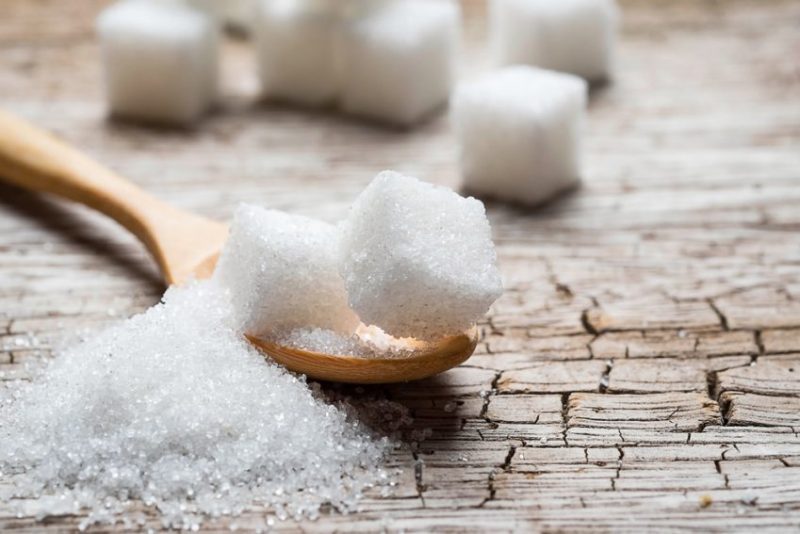
Sugar…sugar…Ahhh…honey…honey. Sugar – one thing leads to another sweet thing. We think sugar is bad but are we switching to something worse?
Wow! Did you know that these sweeteners are 200-13,000 times sweeter than regular sugar? Dr. Osborne stated that these high-powered chemically processed sweeteners change your taste buds and will develop an addiction. You will begin craving sweeter and sweeter foods.
Which one do you use in your coffee or tea? Do you use a sugar substitute? Let’s find out the truth about sugar substitutes.
Read More
March 4, 2019
Immune8
Blog

Are you on the hunt for solution? for pain relief, stress, relief, or self-care, to just treat yourself to good things?
Are you looking for something that will help regain your balance?
Maybe an alternative or complementary therapy is just the thing you need. Read More

